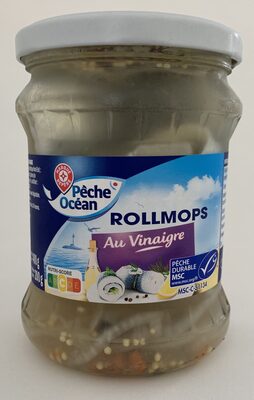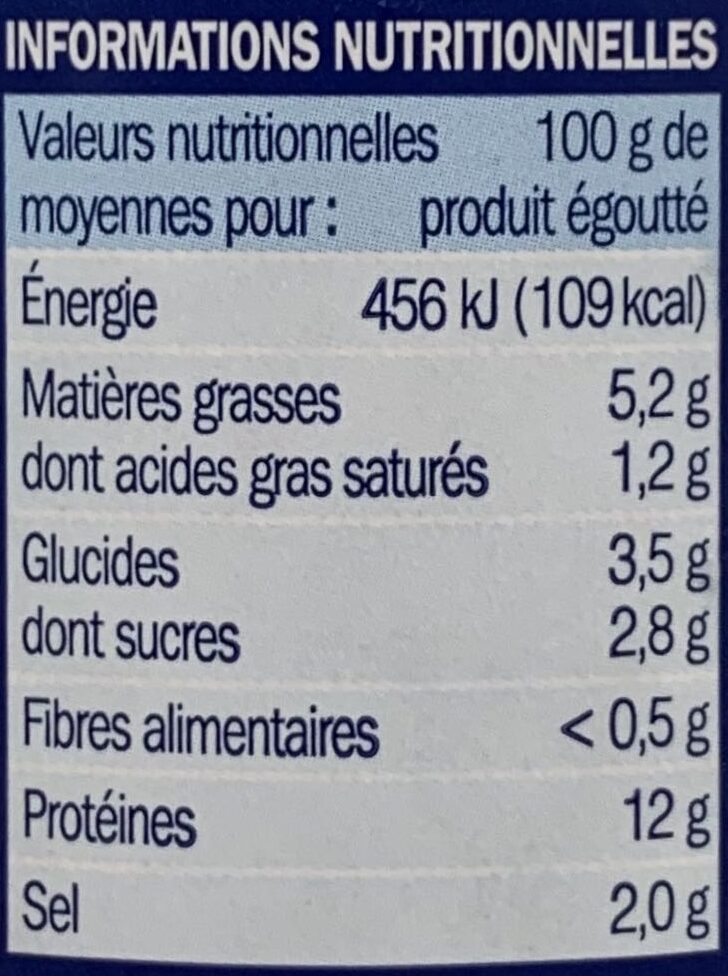Rollmops au vinaigre - Pêche Océan - 400 g
This product page is not complete. You can help to complete it by editing it and adding more data from the photos we have, or by taking more photos using the app for Android or iPhone/iPad. Thank you!
×
Some of the data for this product has been provided directly by the manufacturer Scamark.
Barcode: 3564700699973 (EAN / EAN-13)
Quantity: 400 g
Brands: Pêche Océan, Marque Repère, Scamark
Categories: Seafood, Fishes and their products, Canned foods, Fishes, Fatty fishes, Herring, Pickled herring, Rollmops
Labels, certifications, awards:
Sustainable, Sustainable fishery, Nutriscore, Nutriscore Grade C, Sustainable Seafood MSC, Triman, fr:MSC-C-51134

Origin of ingredients: Atlantic Ocean, North-East Atlantic Ocean
Traceability code: PL 32081817 WE, MSC-C-51134
Stores: Leclerc
Countries where sold: France
Matching with your preferences
Environment
Carbon footprint
Packaging
Transportation
Labels
Other information
Preparation: Egoutter le produit puis enlever le clip en plastique avant dégustation.
Report a problem
Data sources
Product added on by kiliweb
Last edit of product page on by packbot.
Product page also edited by nexty, openfoodfacts-contributors, org-scamark, roboto-app, scamark, yuka.U1BoYUZ2MDhoK2t0aXNBVThrbjU1KzF2eUtDWVlsR3BCT29XSWc9PQ, yuka.YjRrRlBad25sOWt3c2ZJenprTCsxTzFPN3I3eWZFTHBlcmNOSWc9PQ, yuka.sY2b0xO6T85zoF3NwEKvlndlXejd_R3JBTHkn2uB-8uzIZXwWfZDxbXlGao.












